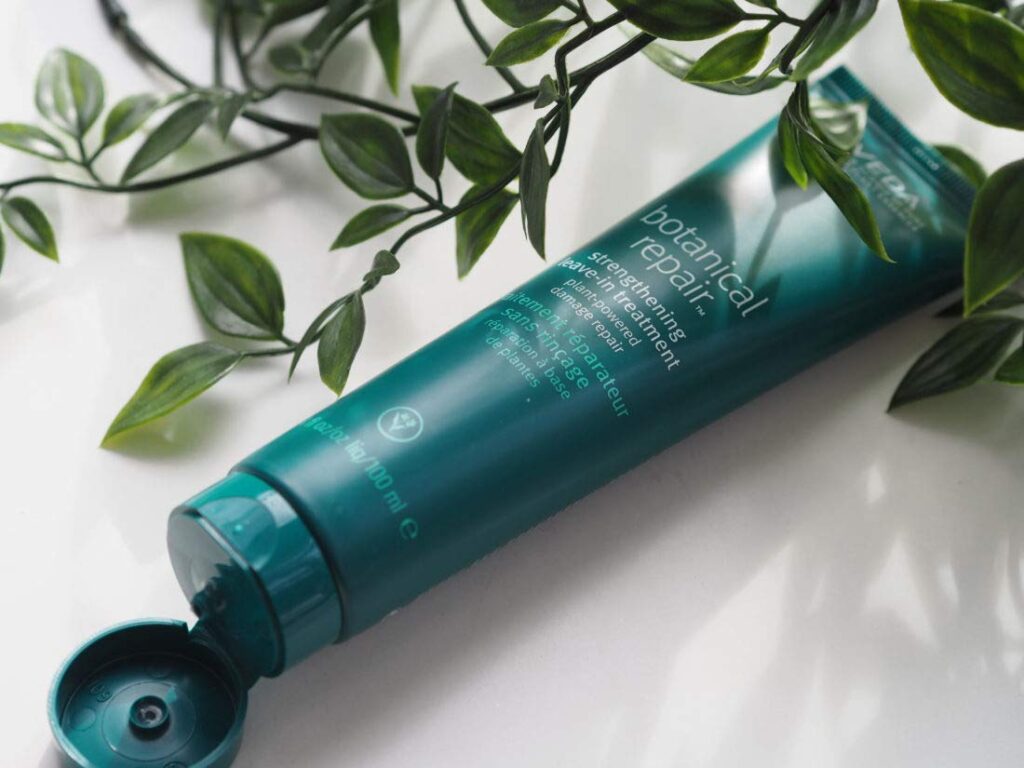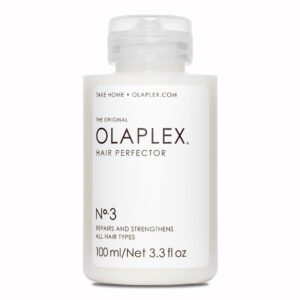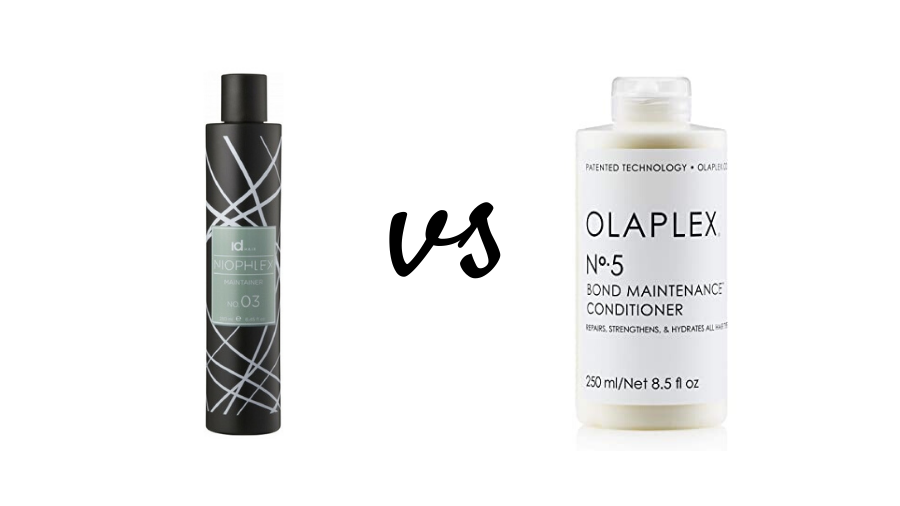Olaplex vs Aveda: Which ONE is Better?
Contents
There has been a lot of talk about hair repair treatments and how effective they are. With that, a lot of brands have come up with their own proprietary product to attend to the continual rising of demand.
The most popular of them is the Olaplex range. While a lot of competitors have sprung up over the years, there seems to not be one that can match Olaplex. Recently, Aveda has risen up to the challenge.
The Botanical Repair Treatment is Aveda’s response to the widely popular bond building technology. Olaplex has been in the lead for years. And it truly should because it does what it’s intended for effectively.
It’s vegan, cruelty-free, and suitable for colored hair. Can the new Aveda hair treatment product be a true alternative to Olaplex? Let’s find out through hard facts.
Olaplex No. 3 Hair Perfector vs Aveda Botanical Repair Treatment
Aveda’s Botanical Repair Treatment
Much like the Hair Perfector, the Aveda Botanical Repair Strengthening Leave-in Treatment helps build stronger bonds, strengthen, repair and protect the hair against damages.
A plant-based treatment, the product is aimed at detangling hair, taming frizz, reinforcing and helping the hair maintain its shine and reinforcing and is suitable for all hair types.
A look at the ingredients:
Water\Aqua\Eau, Cetearyl Alcohol, Hydroxypropyl Starch Phosphate, Persea Gratissima (Avocado) Oil, Plukenetia Volubilis (Sacha Inchi) Seed Oil, Camellia Oleifera (Green Tea) Seed Oil, Helianthus Annuus (Sunflower) Seed Oil, Kaempferia Galanga Root Extract, Octyldodecyl Citrate Crosspolymer, Hydroxypropylammonium Gluconate, Hydroxypropylgluconamide, Bis-Ethyl(Isostearylimidazoline) Isostearamide, Tocopherol, Glycerin, Heptyl Undecylenate, Ethyl Macadamiate, Distearyldimonium Chloride, Behentrimonium Methosulfate, Diheptyl Succinate, Capryloyl Glycerin/Sebacic Acid Copolymer, Cetrimonium Chloride, Fragrance (Parfum), Farnesol, Eugenol, Linalool, Benzyl Salicylate, Citronellol, Benzyl Alcohol, Citral, Hydroxycitronellal, Benzyl Benzoate, Amyl Cinnamal, Geraniol, Limonene, Citric Acid, Tartaric Acid, Potassium Sorbate, Sodium Benzoate, Phenoxyethanol <ILN47655>.
Olaplex No. 3 Hair Perfector
According to Olaplex, the No. 3 Hair Perfector is a weekly at-home treatment, different from the professional version (equally not a conditioner) that you use at home to keep your hair looking shiny, resilient, and soft.
The ingredients are highlighted below:
Water, Bis-Aminopropyl Diglycol Dimaleate, Propylene Glycol, Cetearyl Alcohol, Hydrolyzed Soy Protein, Ascorbic Acid (Vitamin C), Tocopheryl Acetate (Vitamin E), Retinyl Palmitate (Vitamin A), Aloe Barbadensis Leaf Juice, Phytantriol, Panthenol, Simmondsia Chinensis (Jojoba) Seed Oil, Hydrolyzed Wheat Protein, Wheat Amino Acids, Behentrimonium Methosulfate, Cetyl Alcohol, Glycerin, Stearamidopropyl Dimethylamine, Hydroxyethyl Ethylcellulose, Quaternium-91, Cetrimonium Methosulfate, Cetrimonium Chloride, Fragrance (Parfum), Polyquaternium-37, Tetrasodium EDTA, Magnesium Nitrate, Butylphenyl Methylpropional, Methylchloroisothiazolinone, Magnesium Chloride, Methylisothiazolinone, Etidronic Acid, Potassium Sorbate, Phenoxyethanol, Citric Acid, Disodium EDTA, Sodium Benzoate, Prunus Amygdalus Dulcis (Sweet Almond) Oil.
Note on Ingredients
What to note about ingredients: The list here can be slightly different from the one on the label of the product you receive.
When buying any hair or skin care product, always make it a duty to check the ingredient lists. It’s even better if you understand what the ingredients can do since that can also help you decide on a product.
What Are Typical Causes of Hair Damage?
Hair damage can result from a number of things. It can occur as a result of bleaching, coloring, blow-drying, straightening, brushing, detangling, exposure to UV, and so on.
When you notice your hair is dull, has split ends, feels rough, broken, and thinner than usual, it may be damaged. Fortunately, there are lots of hair repair treatments including Olaplex, Redken, L’Oreal, and recently, Aveda.
These products are designed to rejuvenate hair bonds, strengthen the hair, and restore lost luster to hair.
Olaplex vs Aveda: Reviewing Individual Treatment
Aveda Botanical Leave-in Treatment

As you can see from the name, this product is specifically aimed at those with damaged hair. With a plant-based ingredient list, the ABR is poised to instantly repair, strengthen, and protect hair from damages.
Not only is it safe on colored hair, but it can also be used on all hair types. Employing cruelty-free ingredients to combat damaged hair, the Aveda Botanical is definitely a strong competitor to Olaplex.
And this is becoming more evident as more and more positive reviews and ravings of the ABR crops up everywhere.
This bond-building hair treatment employs a blend of green tea, sacha inchi, and avocado to arrest detangling of hair while also preventing breakage and smoothening the cuticle.
And thanks to a bond multiplying molecule, which penetrates the hair cortex, weak hair bonds are strengthened and new ones are built in place of lost ones.
To ensure that hair is kept smooth and shielded against further damage, Aveda added a water-resistant lipid layer from fatty acid to the mix.
One of the areas where Aveda is winning is in the quickness of results. And like Olaplex, you don’t feel you’re dousing your hair in chemicals when using this product. Moreover, the product is suitable for all hair types.
Verdict
Whether you have fine, coarse, textured, or thick hair, you can expect results from using it. Since no product exists without some cons, I’ll like to point out a few so you can keep on the lookout for them.
A few users complained about the product drying out their hair and also making it difficult to comb. While these are few in between, I’ll say it might not be as suitable for those with dry hair as it is for others.
Note:
While this review is focusing on the Strengthening Leave-in Treatment, there are other products in the range.
This includes the Botanical Repair Strengthening Shampoo & Conditioner, Botanical Repair Light Strengthening Set, Botanical Repair Intensive Strengthening Masque.
Olaplex No. 3 Hair Perfector

The product that most resembles the Aveda Botanical Leave-in Treatment is the Olaplex No. 3 Hair Perfector. The Olaplex No. 3 is a take-home product. This means you only take it after the professional treatment, by yourself, at home.
It doesn’t have as many active ingredients as the No.1 Bond Multiplier, so it’s not as potent. According to the maker, the treatment is formulated to improve the look of the hair, strengthen it as well as prevent hair breakage.
Some of the ingredients in the Olaplex No. 3 Hair Perfector include Bis-Aminopropyl Diglycol Dimaleate, Propylene Glycol, Behentrimonium Methosulfate, Hydroxyethyl Ethylcellulose, Stearamidopropyl Dimethylamine, Quaternium-91, Cetrimonium Methosulfate, Cetrimonium Chloride, and Polyquaternium-37.
Bis-Aminopropyl Diglycol Dimaleate
The active ingredient in the formula is Bis aminopropyl diglycol dimaleate. It is an ingredient that creates ionic disulfide bonds in the hair for the purpose of repairing damages caused by chemical treatment to hair.
It doesn’t contain silicone. And is often used in both skin and hair care products to rebuild broken disulfide bonds.
Propylene Glycol
This is a humectant that helps hair strands absorb moisture. It’s used in Olaplex to engage the solubility of conditioning agents. Meaning that it helps make those materials more soluble, i.e to be able to be dissolved.
Behentrimonium Methosulfate
This is a non-sulfate material extracted from rapeseed oil. It’s an effective detangler and an excellent moisturizer. It keeps hair smooth and defined.
Hydroxyethyl Ethylcellulose
This enhances foaming and lather formation in hair care products. It supplies hold to the hair so it’s smooth and soft.
Stearamidopropyl Dimethylamine
This one is behind most of the detangling job on hair. It also smoothens the cuticle, reduces static and flyaways in hair without causing buildup.
Quaternium-91
This is a conditioning agent. It helps in improving softening of the hair and conditioning it. It also delivers vitamin E and shine.
Cetrimonium Methosulfate
It is similar to behentrimonium methosulfate, both of which are surfactants that help to detangle the hair.
Cetrimonium Chloride
It is a hair conditioner. It also detangles, controls frizz and flyaways, and is used in many shampoos and hair treatments like Olaplex.
Polyquaternium-37
This makes Olaplex spread easily. It’s a charged polymer that attaches to the hair for better elasticity, shine, and even alignment.
Olaplex vs Aveda: Comparison
There are a couple of things to note about the two products. In the ingredient, it’s clear that Aveda has steered clear of animal-derived or synthetic ingredients.
Where Olaplex hair treatment uses synthetic ingredients, the Aveda ingredient list is totally plant-based. Now, this is important if you’re ordering online.
The prices of both products are slightly different. On Olaplex’s website, the Olaplex No. 3 Hair Perfect 100ml/3.3 fl oz is priced at $28. The price is around the same on Amazon and similar retailers.
However, the Aveda official website holds the 100ml/3.4 fl oz of the Aveda Botanical Repair at $37. I found a totally different price on Amazon, albeit much cheaper.
Both products are scented and are essentially after-service. Meaning you can go use them at home following specified instructions.
If you have any comments about any of the products, kindly let’s know in the comment section.
Related Posts:
- Is Cantu Bad for Your Hair?
- Oribe Volumista vs Maximista: What’s the Difference?
- Oribe vs Pureology: Which Brand Is Better?
We earn commissions if you purchase thru our link. Majority of products aren’t tested by the site owner (except a few). Content is from the research and feedback of users.

